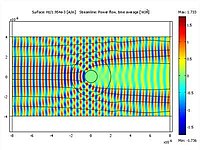
Photo from wikipedia
Whether mammalian embryos develop normally under microgravity remains to be determined. However, embryos are too small to be handled by inexperienced astronauts who orbit Earth on the International Space Station… Click to show full abstract
Whether mammalian embryos develop normally under microgravity remains to be determined. However, embryos are too small to be handled by inexperienced astronauts who orbit Earth on the International Space Station (ISS). Here we describe the development of a new device that allows astronauts to thaw and culture frozen mouse 2-cell embryos on the ISS without directly contacting the embryos. First, we developed several new devices using a hollow fiber tube that allows thawing embryo without practice and observations of embryonic development. The recovery rate of embryos was over 90%, and its developmental rate to the blastocyst were over 80%. However, the general vitrification method requires liquid nitrogen, which is not available on the ISS. Therefore, we developed another new device, Embryo Thawing and Culturing unit (ETC) employing a high osmolarity vitrification method, which preserves frozen embryos at −80°C for several months. Embryos flushed out of the ETC during thawing and washing were protected using a mesh sheet. Although the recovery rate of embryos after thawing were not high (24%-78%) and embryonic development in ETC could not be observed, thawed embryos formed blastocysts after 4 days of culture (29%-100%) without direct contact. Thus, this ETC could be used for untrained astronauts to thaw and culture frozen embryos on the ISS. In addition, this ETC will be an important advance in fields such as clinical infertility and animal biotechnology when recovery rate of embryos were improved nearly 100%.
Journal Title: PLoS ONE
Year Published: 2022
Link to full text (if available)
Share on Social Media: Sign Up to like & get
recommendations!